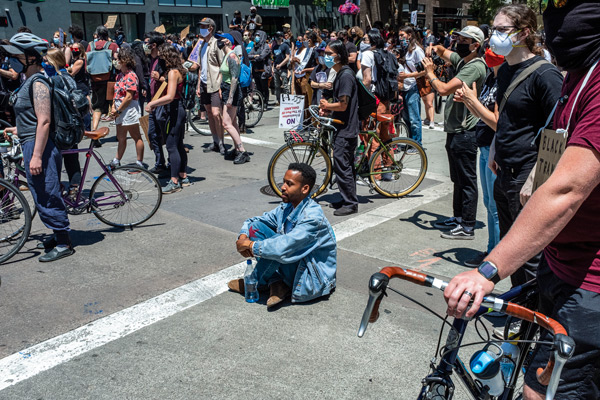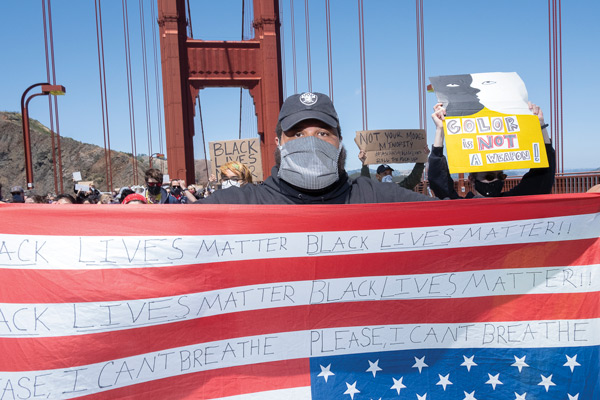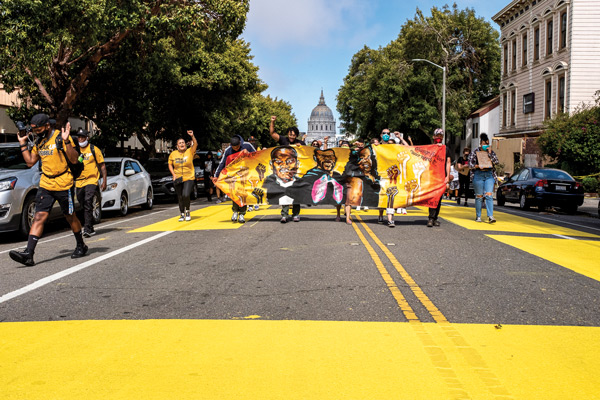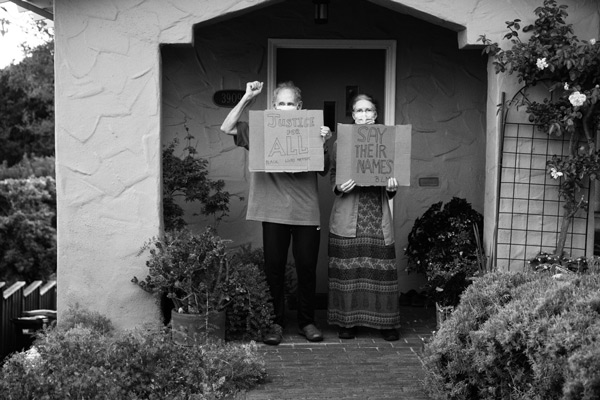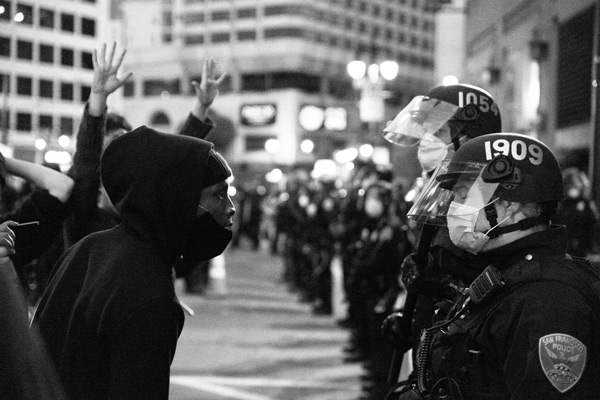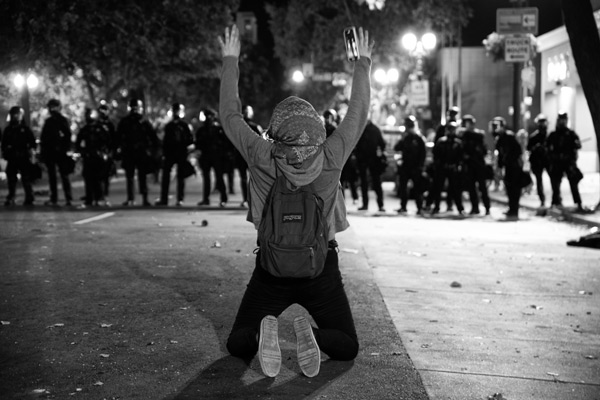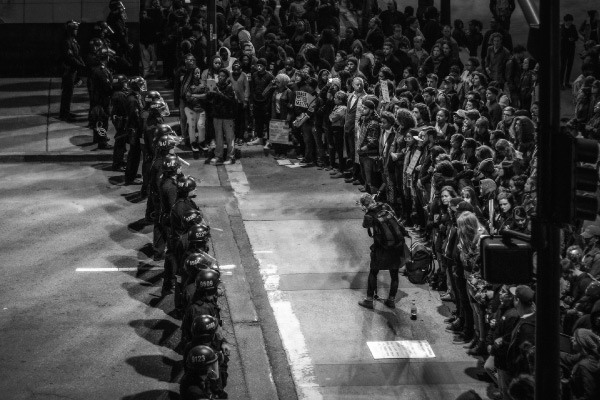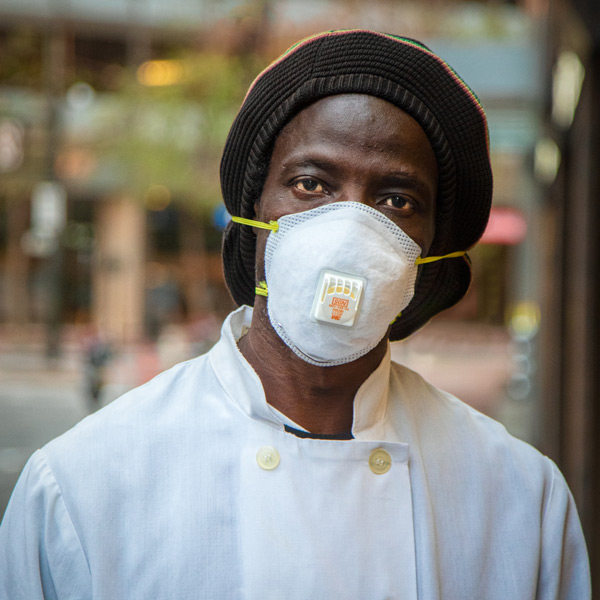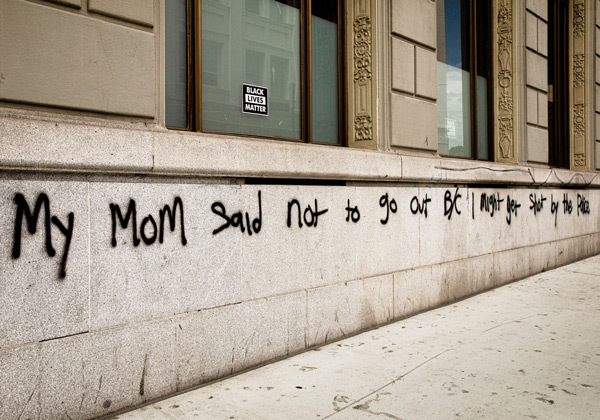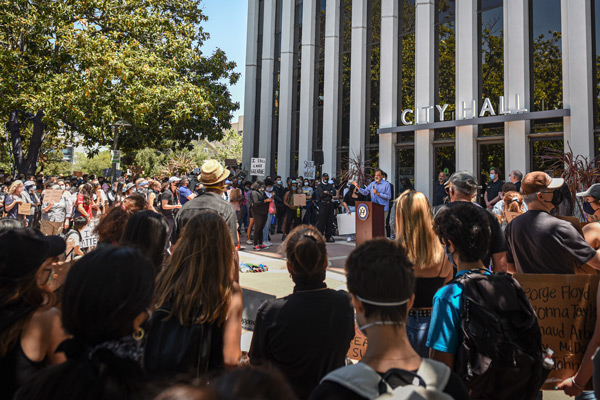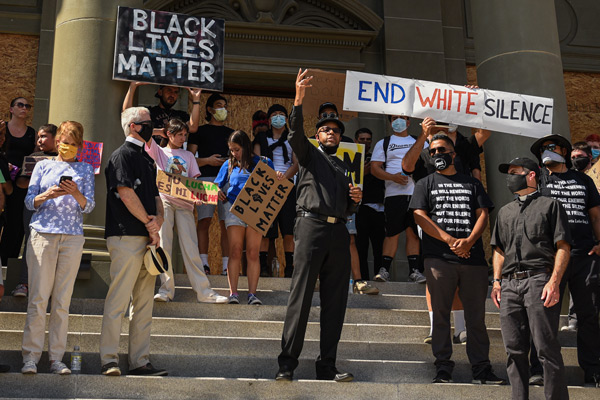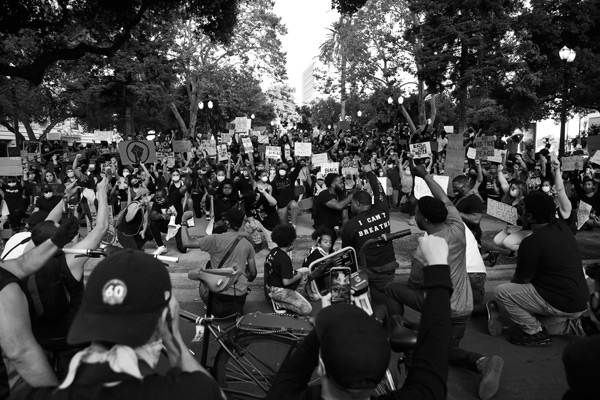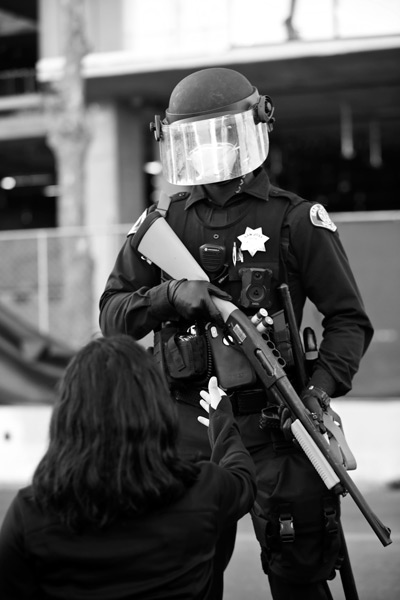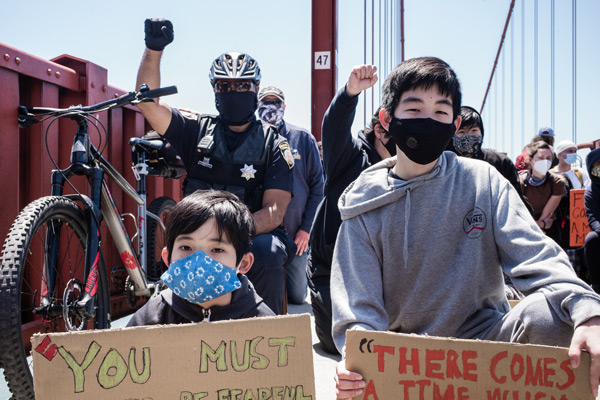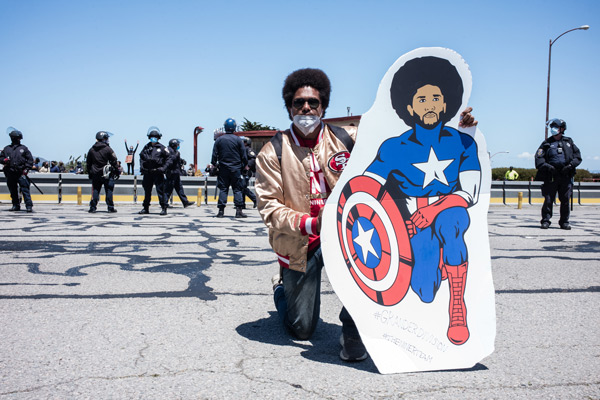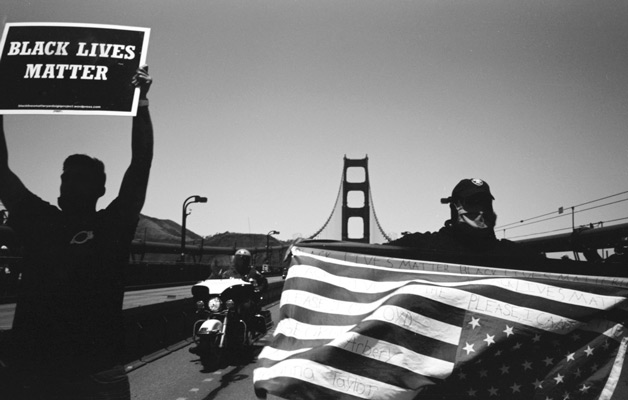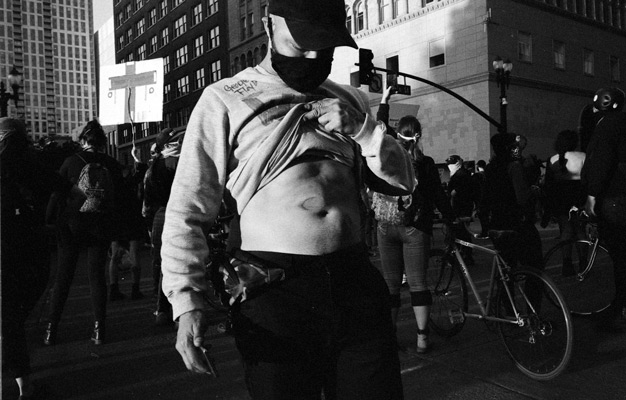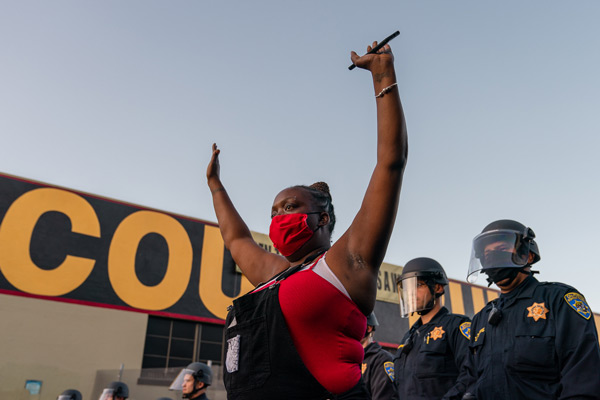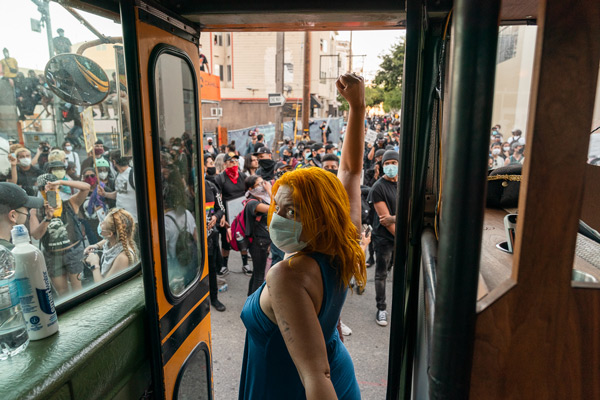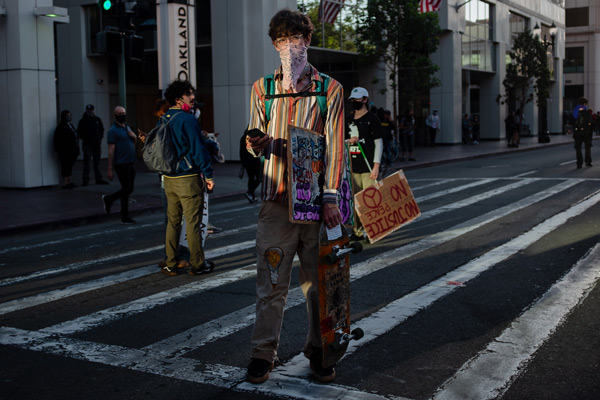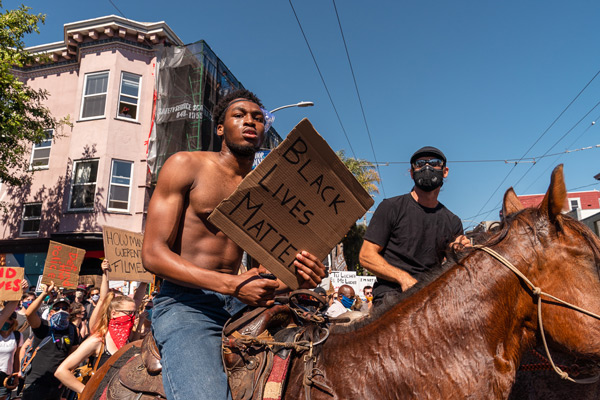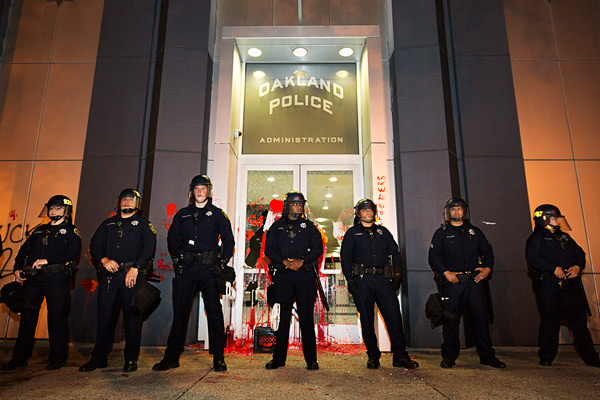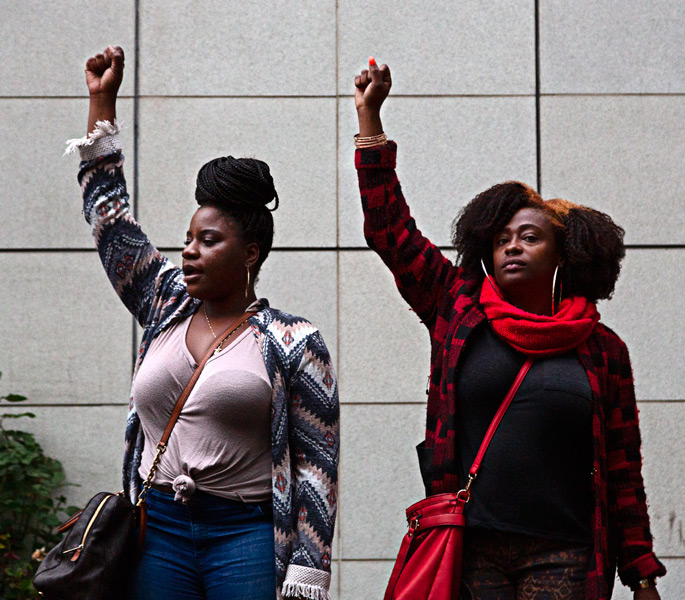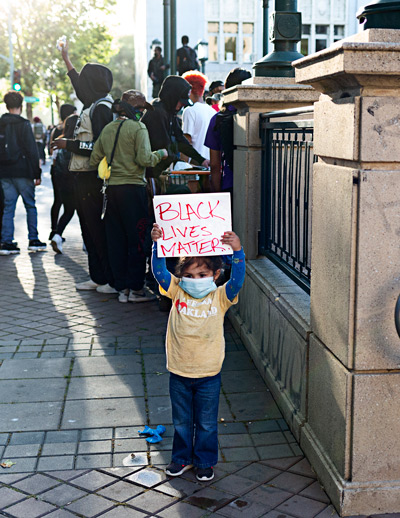Say Their Names
West Valley College, Fall 2020
The work you see here are from the following ten photographers who have come together to share their work documenting the protests around the Bay Area that have taken place in response to the murder of George Floyd on May 25, 2020.
These photographs are meant to honor the memory of victims of police brutality, speak up against racism, and record a historical movement in America and around the world. Shooting the protests has been a whirlwind of an experience. I have witnessed joy, sadness, anger, frustration, and compassion the last few weeks. Many people protest in many different ways. The cardboard signs are out, but this movement feels different. I can hear the anger in peoples’ voices. The calls for justice are coming from each and every neighborhood of the Bay Area. I have photographed protests from San Francisco to Santa Cruz, and many neighborhoods in-between. This is a historical time and a decisive moment in racial equality in America. 28 years after the Rodney King riots, racist policies have not changed in America. The people are tired and fed up with inequality and injustice to people of colors and it shows in the thousands of people marching across the world on a daily basis, shouting the names of all the unfortunate people of color killed at the hands of police.
These images were taken to show the world and document what is really going on in the streets from the peoples point of view, to honor those whose lives were lost from police brutality, and to speak up on the racism that is happening all over our country. I hope that these images will help you understand and remember that the lives lost will not go unheard, and the power is in the hands of the people.
Minneapolis was burning... George Floyd was murdered by police during an arrest in Minneapolis on May 25th. The officer knelt on his neck for eight minutes and forty six seconds. I repeat. Eight minutes and forty six seconds. George Floyd’s last breath came out at 05:53. Just like you’d see on a stopwatch. America stopped and watched. The officers involved were yet to be arrested and as a result, Minneapolis started to burn on the 28th. I rose from my chair to get dressed for a long evening. In Oakland, we have a long history of protesting and tonight would be one for the books. Like I’d done in the past, I went out to document. I felt nauseous. Something just felt different about this protest.
Sojurner Truth. Frederick Douglas. Dr. Martin Luther King. Angela Davis. Alicia Garza. Patrisse Cullors. Opal Tometi. The Abolitionist Movement. Reconstruction. The Civil Rights Movement. The Black Lives Matter Movement. Ever since “20 and odd” enslaved people were sold into bondage at Jamestown, Virginia in 1619 we have resisted, fought back and protested against the Peculiar Institution. Protests against institutionalized racism is not new. It is, in fact, as American apple pie. Black protests are not isolated incidents. They go back to the beginning. Even protests in the form of suicide by drowning during the Middle Passage was preferable to some than a life of slavery. The Black Lives Matter movement is the manifestation of resistance and protest against institutionalized racism right now. After years sanctioned killings, people have, again, taken to the streets to push back against injustice. There are always catalysts to protest. A knee to the neck of George Floyd for 8 minutes and 46 seconds is the most recent. And hand-in-hand with Black protest have been the people who have documented the uprisings. From the mouths of enslaved people in their narratives to today where citizen journalists, bystanders and artists reflect back to society raised voices and fists using the most modern documentary tool: the photograph.
I have photographed many protests since the election of Donald Trump. They have all been intense expressions of frustration and condemnation regarding critical issues like women’s rights and travel bans, among others. What I have witnessed during the BLM protests was an even more profound, heart-felt coming together of people needing to express their anger and grief over the murder of George Floyd and the injustices perpetrated on African-Americans and other communities of color. It was deeply moving and inspiring to document these large crowds of strangers willing to come together to protest, during the pandemic, raise their voices and show their common belief that we need to work together to recognize injustice and make our society truly just, respectful and supportive of all people. The sentiments were sincere, authentic, visceral and I do hope that we can actually begin to implement meaningful and sustainable changes to our ways of life that reflect the values and ideas expressed in those months of protests.
We are in the middle of a pandemic. And I’m not talking about Covid19. I am talking about Racism. Black Lives have always mattered, but too many people didn’t believe their lives were not of the same value until…. George Floyd. It was the first time most people witnessed a cop prevent a human from breathing on camera. There have been other instances over the years, but for some reason, this one sat with people. It resonated and clicked. Black people have been crying for justice for decades. This time, it’s different. We not only have time, we have Allys showing up in droves. Night after night, sign after sign, chant after chant and tear after tear. They are showing up in their own communities and fully vested in the movement. No longer willing to accept that some people are just comfortable in their bubble, and refuse to see or believe that Black people are being oppressed. I started actively protesting and document the protests day 2 in San Jose, CA. The emotions were heavy. I was reluctant to use my camera initially, because I didn’t want to violate anyone’s space and/or feelings. They were so raw. I, myself, had not found the protest/photographer balance. Took 2 days to realize, my camera was welcome. People wanted to be seen, heard and documented. I’ve since navigated around the Bay Area covering protests, vigils, bike rides for black lives, etc with confidence, clear eyes and open heart. I have been exhausted at times, and while I find it’s important to decompress and recharge, there is so much work to be done. I take space when I need to, and then get back to documenting a very important part of history. I hope my images accurately convey the strength, fear & fearlessness, hope, determination, and most all truth.
No Justice, No Peace! Last year in July, I went to visit family in Mississippi. I remember waking up early in the morning to stretch and go for a morning run around their sub-division. Every day as I made my way out the door, I would remember their home address and made sure it was easily accessible on my phone just in case. As I ran around the neighborhood, I was hyper-vigilant about my encounters during my run, cataloging mentally anything that looked out of the norm. I would make sure to look extra friendly and non-threatening as I ran past people on the sidewalk. All this to avoid any trouble and be ready to account for my whereabouts if the police stopped me. My story of social injustice and racism in this country begins in 1982. Black people have been getting lynched, murdered, raped, and socially, and economically shackled for centuries. This trauma has been getting passed on for generations and generations and it must come to an end by any means necessary. The time to break these old schemas is now, or America will never be great. When this uprising began, a friend asked me why I was photographing/documenting this historical moment and what it meant to me. The question baffled me as I thought about it for the first time. For me, there was never a question of whether I would go out or not. I am a photographer of color and an immigrant that learned about being the "you people" at an early age. I must be in the streets, and when I'm out there, I'm not reporting on a protest; I'm participating in a social movement towards equity and justice. I'm looking for those moments that reflect a feeling, a thought, or emotion. The images I make are my voice in this movement, and I'm trying to reach your heart through your eyes because I want you there by my side.
The following work focuses on documenting the BLM movement, protest, and police tactics used following the killing of George Floyd, among many others. It comes at the height of a pandemic that is sweeping the nation and world with an impending election that is sure to rock the country as the nation is further being split in two.


